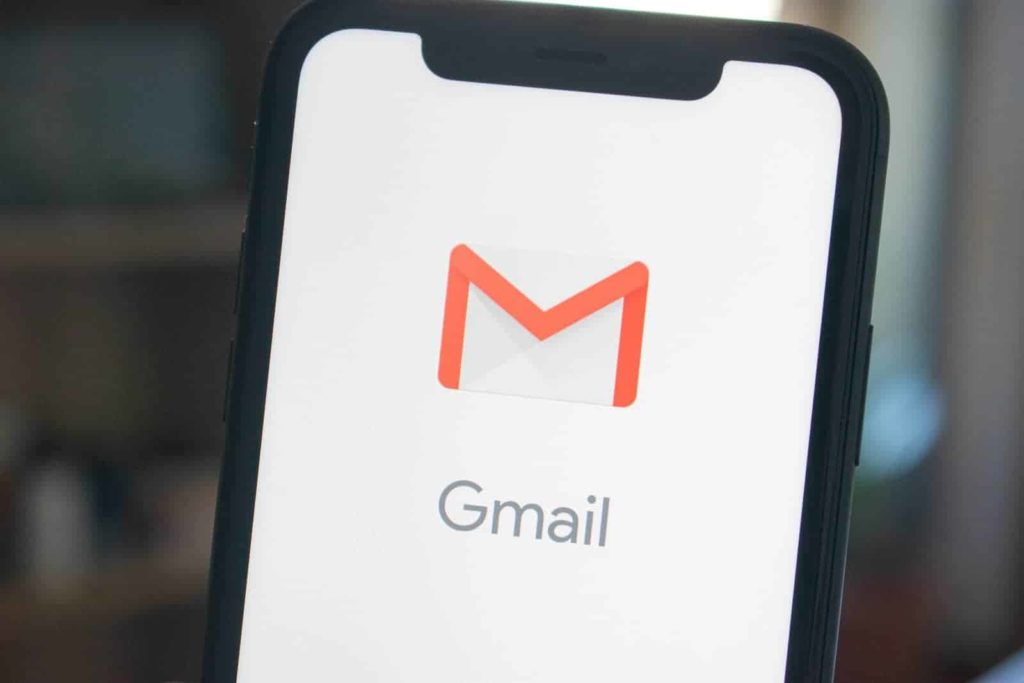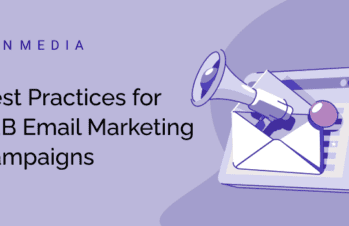An email drip campaign involves sending a series of messages that are based on a user’s behavior. By sending or “dripping” messages over a specific period of time, this marketing tool can help your business nurture leads, increase sales, and grow brand awareness.
Email drip marketing comes down to providing your customers the right information at the right time.
Why does drip marketing work?
Because a consumer’s journey happens in micro-moments. Rarely does a consumer go from searching for a specific product they need, to finding a brand they like, to making the purchase in a single, straight, unbroken line.
Instead, they may visit a company’s website for the first time on one day. A week later, maybe they’ll follow the brand on Instagram. The next day, they might browse your products online. What an email drip campaign does is to help unify these experiences through personalized content.
Here’s our 6 step guide to launching an email drip campaign.
- Set a specific goal per campaign
You need an end-goal in mind before creating your email drip campaign. Do you want to direct your subscribers to a specific product? Promote a new video?
Let’s say you want to focus on converting leads into customers. An effective drip campaign for this goal is the “welcome email.”
- The Welcome Email
The welcome drip email is a great avenue for introducing your brand and making a good first impression. They can be as basic as saying “Nice to meet you!” or a way to offer new subscribers discounts on their first order.
Here’s an example of Headspace’s welcome drip email:

And here’s a promotional welcome email from Buy Buy Baby:

Regardless of what your goal is, be sure to tag links with UTM parameters so the data can be transferred to your Google Analytics account.

- Provide the right information
After deciding your goal for the drip email campaign, next, you should figure out what information is needed in order to achieve that goal.
For example, if you want your reader to use your new product, your drip email should include helpful information about what makes your product distinctive and different from what competitors are offering. You could also include testimonials from real customers who use and love your product.
Remember, you don’t want to overwhelm your readers with too much information or confuse them by providing too little. It’s vital to provide just the right amount of direction. That means enough information to get them to take the next step—whether that’s clicking a “Browse our new products” button, or simply opening the email that will come next in the campaign.
- Be user friendly with your messaging
Most people don’t read their emails word-by-word, so it’s important to make sure emails are “scannable.” Use headlines and subheadings, and bold specific sections of your message. Every word should serve a purpose, so write succinctly and clearly.
It’s not an exaggeration to say the content of your drip emails is the most important element. The best email content:
- Provides immediate value— “40% off sweaters today!” or “Here’s how we’re addressing COVID-19”
- Is clear— “For 20% off pricing, use this promo code when you checkout,” for example.
- Is engaging— “We’re so glad you’ve joined us!” or, “We thought this photo from one of our followers was too good not share with you.”
For more information on how to craft the perfect email, check out: “11 Email Marketing Strategies That Guarantee a 50% Click-to-Open Rate.”
- Decide on the campaign’s frequency and timing
After clarifying what you hope to achieve with your emails and what you want to say, you’re ready to set the frequency and timing.
There isn’t a one-size-fits-all approach with frequency, so think about what makes the most sense for your company.
As for timing, you probably already have some insight into what days and times are performing best. If you’re already sending out a newsletter, look at that data. Where are you seeing high open rates and other positive KPIs?
- Segment
Segmenting is critical for customizing your drip campaign for essential effectiveness. It involves dividing email subscribers into smaller sections based on their behavior, demographics, interests, or other relevant criteria. By segmenting your audience, you can create highly personalized content.
One message could be highly relevant to one consumer but completely irrelevant to another. Not all of your subscribers will want or need the same content.
Your consumers will notice and appreciate the extra effort you put into segmenting content. You can segment your emails by:
- Geographic location—people in Miami won’t want information on winter clothes, for example
- Behaviors, like visiting a specific landing page
- Demographics
- Measure and analyze
Your work isn’t done after scheduling the drip campaign. Be sure to measure the:
- Open rate
- Click-through rate (CTR)
- Conversion rate
- Bounce rate
- Number of unsubscribes
- List growth rate
- Forwarding rate
- Mobile open rate
- Mobile click rate
and other KPIs you deem relevant.
The success of your drip campaign will factor in all these measurements to see if you have “filled your marketing bucket,” or in other words, attracted users into your sales pipeline. Use this data to pinpoint successes and likewise, to evaluate points of concern in the marketing campaign.
Effective drip campaign examples
Here are some examples of real drip campaigns for inspiration:
Netflix’s Win-Back Campaign
Netflix’s win-back campaign is a great example of what a brand can do to combat their churn rate.
Here’s what their cancellation confirmation email looked like:
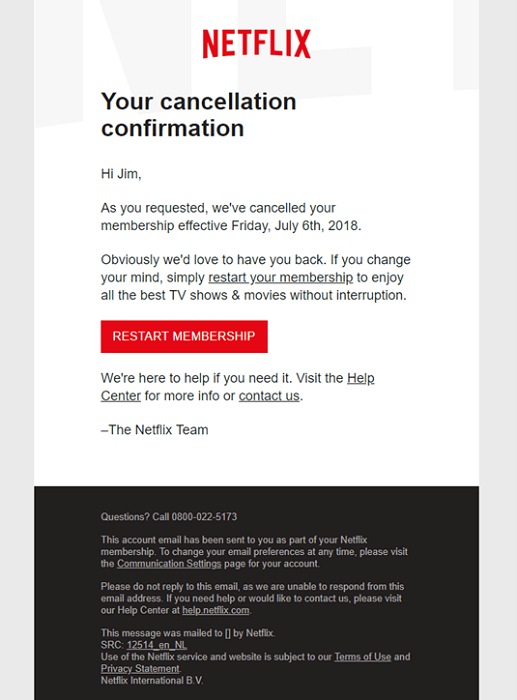
Note the clear CTA, “restart membership.”
Additionally, Netflix sent former members recently added movies and TV shows they could access by rejoining the platform:
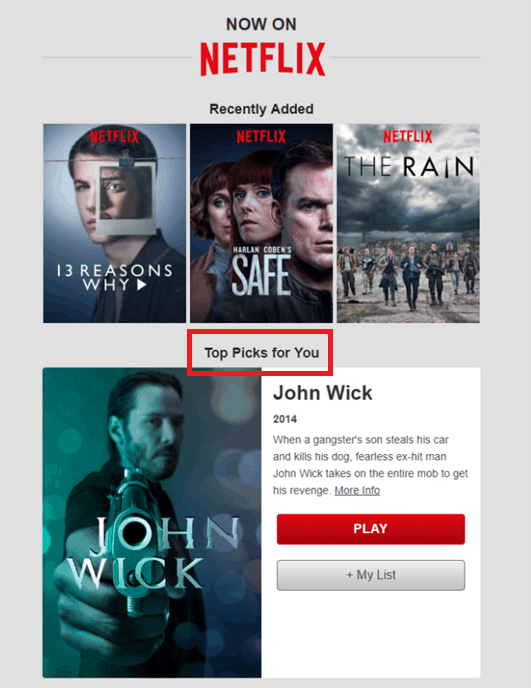
The “top picks for you” is an effective level of personalization and something you can emulate in your own drip campaigns.
Dollar Shave Club’s Cross-Selling Drip Campaign
Cross-selling is when you recommend products to a consumer based on their previous purchases. This tactic can easily be translated into a drip email campaign.
Here’s an example from Dollar Shave Club:
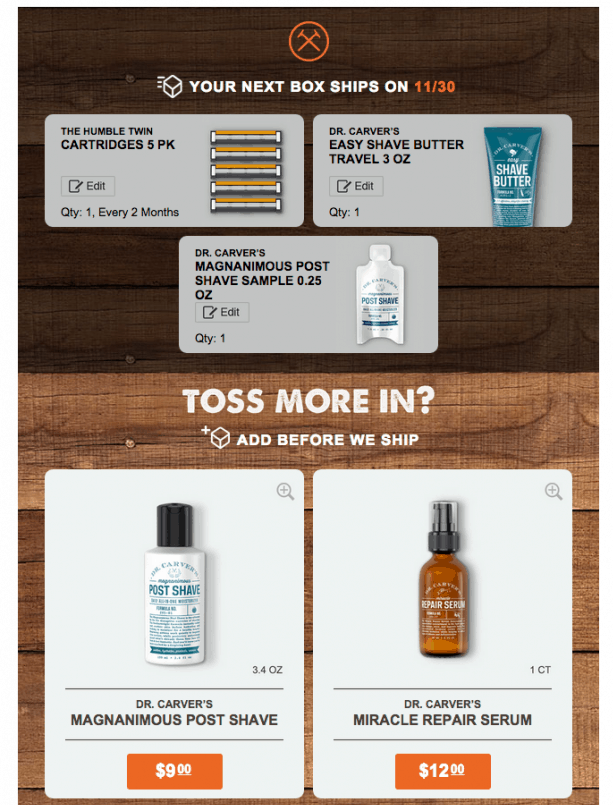
The email works well because it directly draws information from the consumer’s order history and reads more like a helpful suggestion than an overbearing sales attempt.
Kenneth Cole’s Abandoned Cart Drip Campaign
Cart abandonment is common in the world of e-commerce. Complete transactions don’t always occur in one sitting anymore.
One solution is to send a reminder email. Here’s how Kenneth Cole did it:
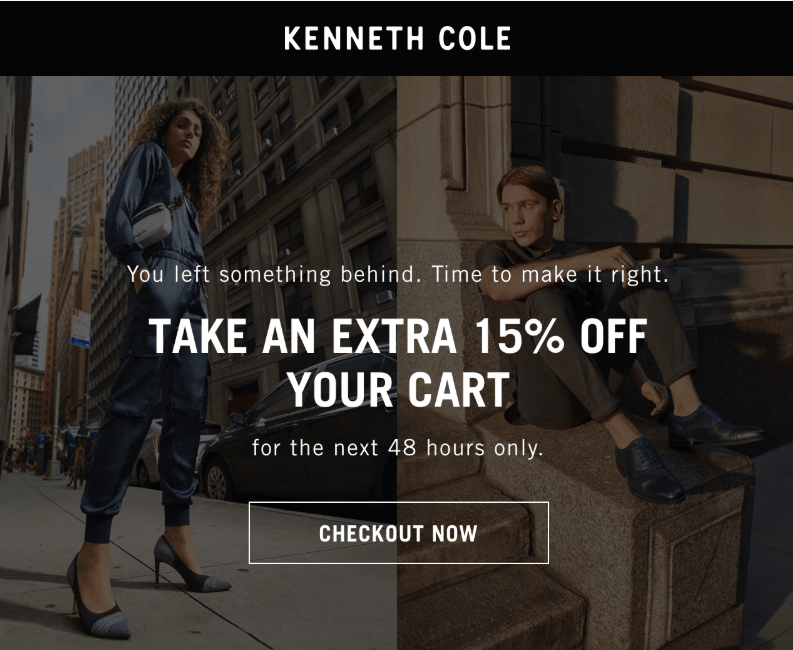
Not only does the email serve as a reminder, it has an exclusive offer attached to it.
If this initial email wasn’t enough to complete the purchase, this follow-up email was also sent:
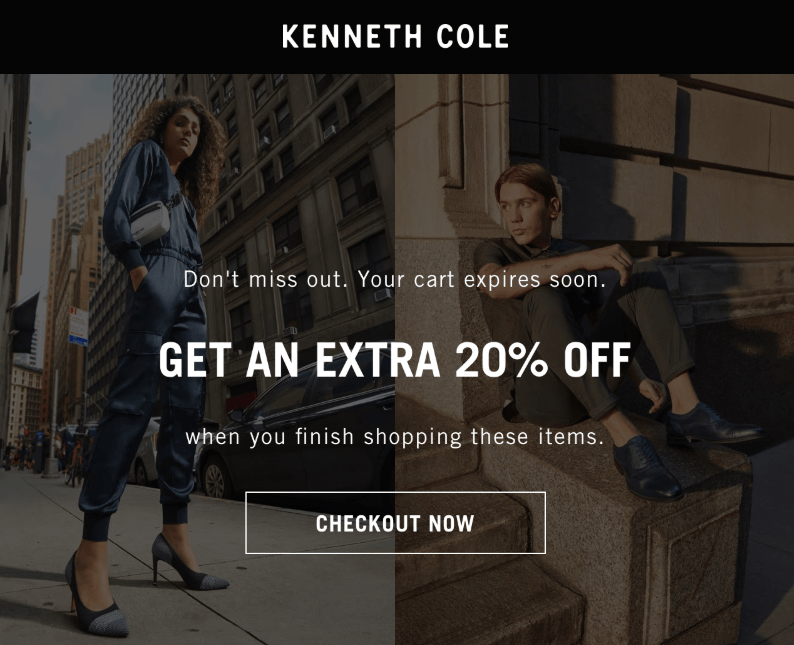
Increasing offers with each reminder is a highly effective way to counter cart abandonment.
Drawing from the steps and strategies shown above, you’re ready to launch your drip campaign.

